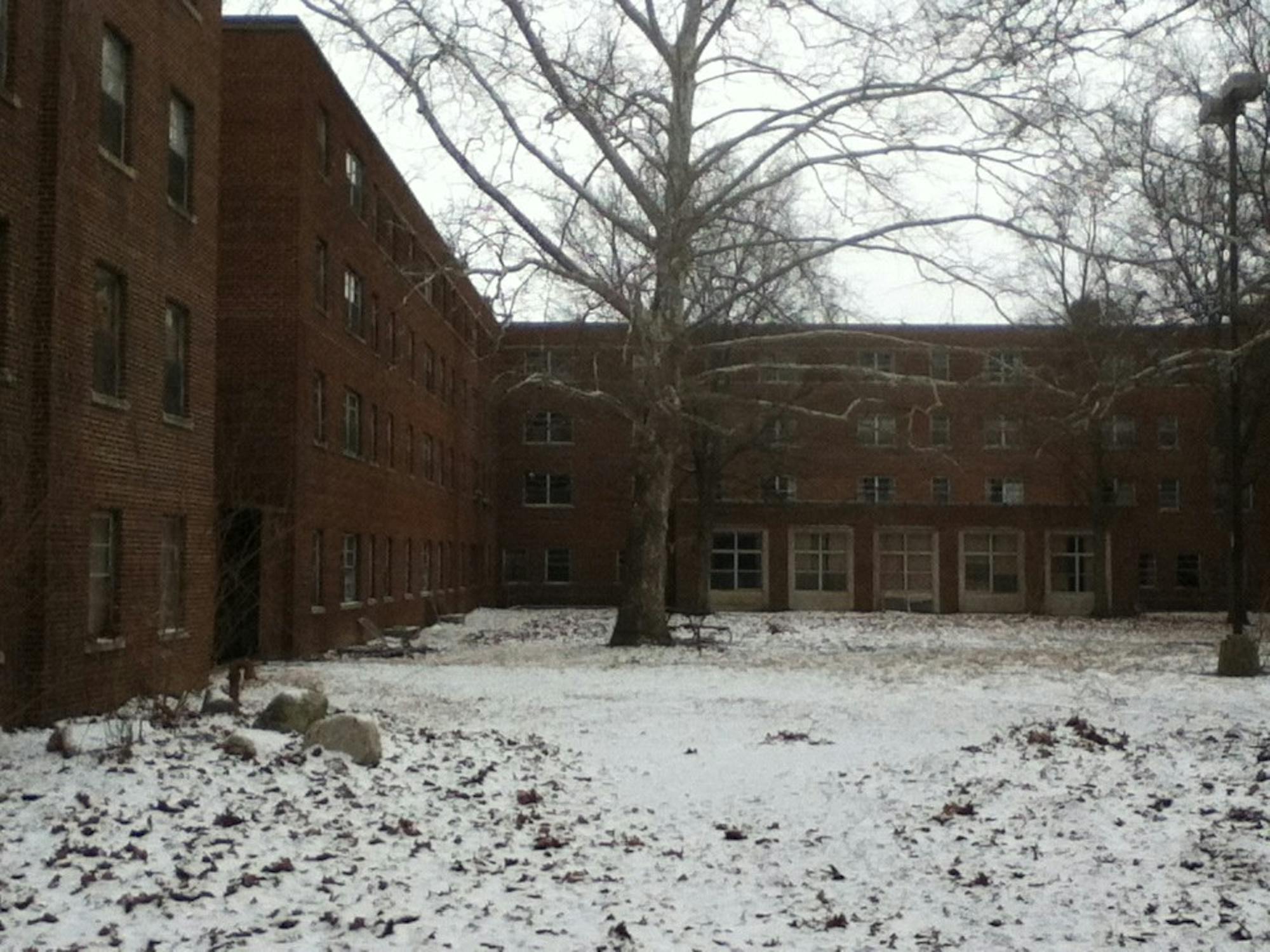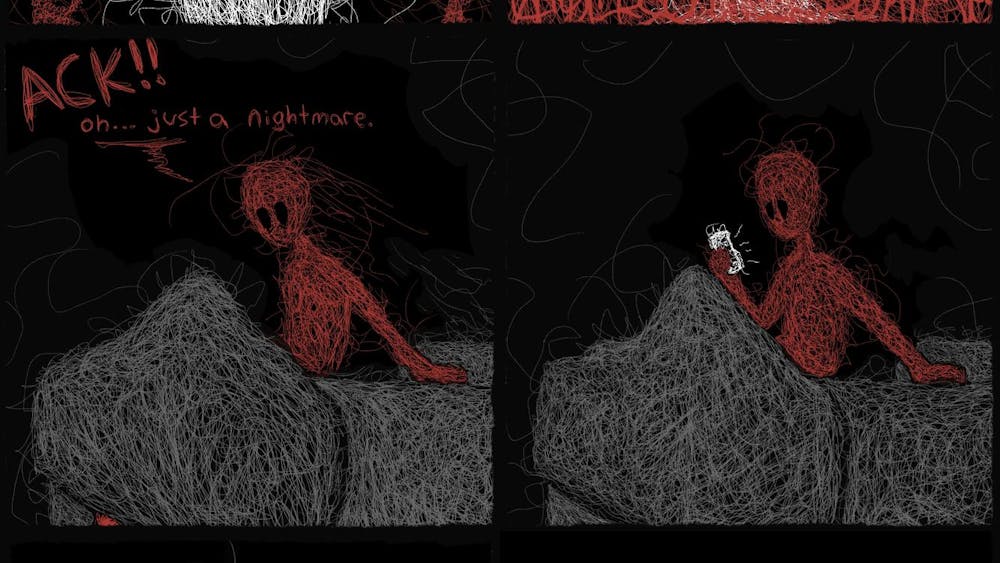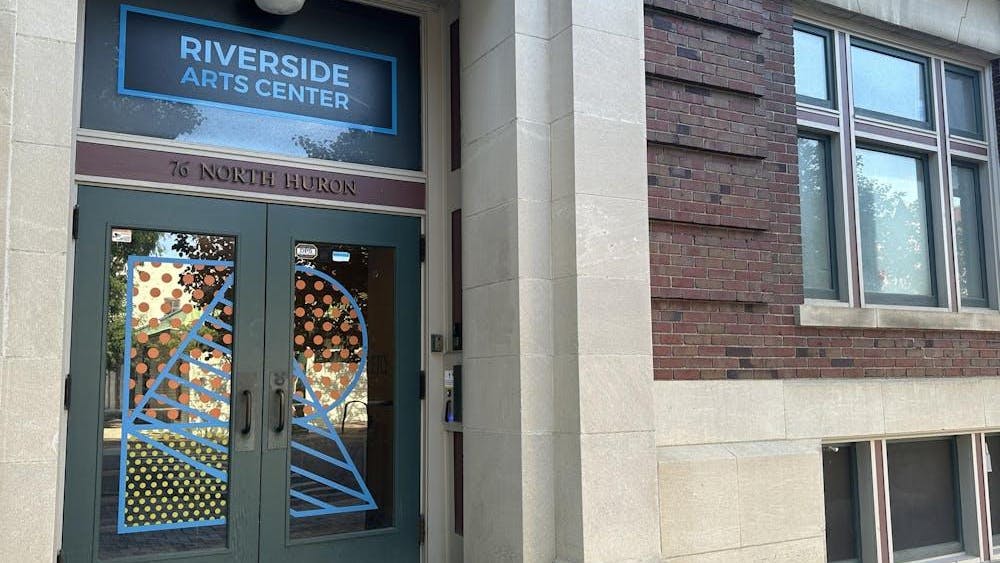Nestled in the heart of Eastern Michigan University’s campus, the Lydia I. Jones Residence Hall was the center of many students’ universes, a place of afternoon naps and late-night homework sessions.
Walk through its front doors and its warm, welcoming lounge will greet you with velvety ruby carpet and the exquisite woodwork of a forgotten time. Its sister building, the adjacent Mary A. Goddard Residence Hall, boasts a fine marble entrance leading into a streamlined, modern-looking interior.
The sweet sound of music wafts into the inviting lounge through the open window. A band is playing in the dorms’ shared courtyard.
“If you opened up your windows you could hear the concert as loud as if you were in the front row,” said Michael Hejka, a music education major who lived in Goddard Hall from 2001-03.
That was then; this is now. The plain, lifeless halls are cold and dead in the winter air, and the formerly friendly-looking lounges have taken on a chilling, almost eerie feeling. Furniture is stacked like an oversized game of Jenga, each lonely chair seemingly awaiting the day when some frazzled college student will pull it from the bunch once again and laze upon it.
The Jones and Goddard halls, originally female-only dorms and both formerly honors dorms, were no longer utilized as student housing in 2005. The various organizations that had offices there, such as Upward Bound, DECA and The Eastern Echo, had all vacated the building by 2010 as well. Now, the two buildings sit unused, only serving to provide extra storage space for the university and plenty of creepy rumors for the students.
Despite a multitude of student-propagated myths about the vacant buildings, the true downfall of the dorms was due to a low point in enrollment.
Brian Fitzgerald, associate director of residential services for EMU Housing, said the dorms were closed in light of fewer students living on campus.
“It was more just a matter of demand,” Fitzgerald said. “There wasn’t a demand for it. We didn’t have as many students at Eastern at the time.”
Jones Hall was constructed in 1948 and Goddard in 1955. Both structures were built by R.S. Gerganoff from Ypsilanti, and the designs of the buildings were similar to those of the Munson and Brown apartments and King Hall (as well as its now-demolished twin, Goodison Hall). The individual dorm rooms were spacious and cozy, and while Jones had community baths, Goddard boasted private bathrooms for every suite.
Sadly, like many unused buildings, the once-charming Jones and Goddard halls have fallen into disrepair in the years since closing, suffering a flood in the winter of 2008 and enduring eight years of limited maintenance.
“It didn’t look like that when we moved out,” said Dieter Otto, one of the directors for EMU’s Physical Plant Division. “Think about not cleaning your house for eight years.”
“It’s beautiful,” Fitzgerald said. “The woodwork in Jones and Goddard—kind of the old style—but definitely, it will need kind of a mechanical upgrade if we use it again.”
The former dorms have been broken into as well, with trespassers ranging from squatters to curious students. Although according to Otto, break-ins are not as big of a problem as they have been in previous years.
“The [EMU] Department of Public Safety does a really good job of minimizing any safety concerns with the buildings,” Otto said.
While structurally sound, the buildings do have many infrastructure problems due to age, Otto said. The dorms do not currently have running water, the pipes need replacing, the electrical work in the building may need an update and Jones doesn’t even have an elevator.
But Jones and Goddard are not destined for the wrecking ball just yet.
“We’re looking how to best utilize the space for the future of the university,” Otto said. “Any space on campus is always looked at as how it can be incorporated or improved, so that space is being looked at as that.”
One of the biggest challenges of reopening Jones and Goddard is funding. Otto and Fitzgerald said the renovations needed to make the buildings functional once again would cost millions. Another roadblock is deciding how to repurpose the buildings.
“There’s a lot of ideas, and a lot of people who have input on that and how that space will be used,” Otto said, mentioning that both the Arts Department and the Housing Department have looked into expanding into Jones and Goddard.
“I would like to see them as dorms,” said Aida Beard, the Physical Plant Division’s zone manager. “But also, with the new concept of the living and learning communities, I think that would be a good place to start, to use them as classrooms as well as dorm rooms. I think it’s a great space on campus.”
With the discussion of the two former dorms as the potentially useful space they appear to be, it is easy to forget that for many young people making their way in the world, these old buildings were once called home.
A quick glance at the comments on the Jones and Goddard hall photographs in the Office for Alumni Relations’ recent Facebook contest, Residence Hall Rally, showed that these two dorms held a certain significance to the students who lived there, even years later. These places were not simply buildings, but communities.
Julie McKeeman, who lived in Jones Hall from 1997 to 2000, said, “We started the first annual Geek Week competition (although the geeks weren’t too happy about it). I also remember collecting aluminum tabs and taking them to Mott’s Children’s Hospital. Our front desk staff put on our own puppet rendition of ‘Wizard of Oz.’ We also had our annual semiformal dance.”
“They just had a very lively community,” Fitzgerald said. “They would have some interesting programs. They tended to be very witty … they were very close-knit.”
But with newer, modern dorms like the Village Complex, would students still opt to live in the historic buildings?
“I think it would definitely fill a niche,” Fitzgerald said. “I think students would like it. I mean you have the courtyard, you have the lounges … The lounges I think are beautiful. I really like the wood. And then there’s some kind of idiosyncratic rooms there. Like a lot of older buildings, it’s not as cookie-cutter.”
The futures of Jones and Goddard are uncertain at this point. With the ever-increasing student population, will these buildings finally see renovation and reuse? Will the next generation of EMU students get to experience the community and camaraderie of these beloved dorms? Only time will tell for sure.










